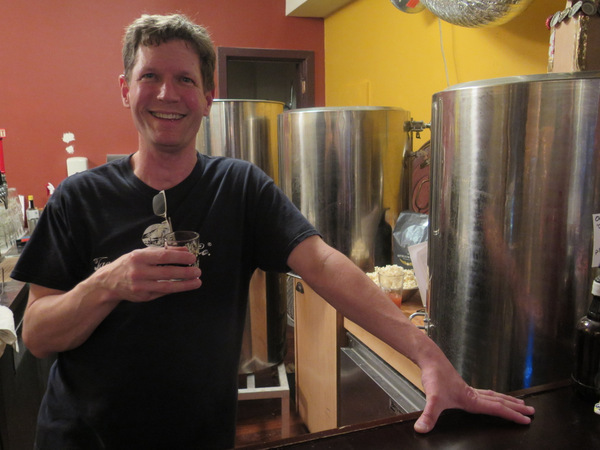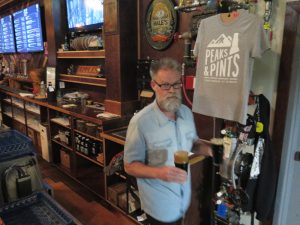
Navigating the seas of possible beer flavors and styles can sometimes drown even the most veteran brew chugger with questions about what to sample, what to blindly buy and what styles to leave on the shelf.
But fear not. Local beer buddies are just a taproom or barstool away. They will throw you a lifeline so you can find a brew you will love without suffering bitter beer face.
Shotglass-sized beer samplers can be a novice brew drinkers best friend and are commonly offered at taprooms and well-stocked taverns. So one beer-tasting hack is to ride that pony until a sampler brings a smile.

“I always tell people they won’t know they don’t like something until they try it, and if they want me to pour the rest of their taster out, that’s fine I can always make more,” said Ken Thoburn, head brewer at Wingman Brewers.
But where to start and what to try? Asking is always a good place to start if you don’t want to dive in.
“I think there’s a beer out there for everyone,” added Thoburn. “I’ve talked to a lot of people who say they don’t like beer. Finding out what they do like is huge. If someone is a red wine drinker, they may be interested in trying a fruit beer or a sour-style beer that carries some of the same characteristics. White wine drinkers often enjoy Belgian-style beer, wits and some of the more effervescent lager styles. But you never know what someone will enjoy until they try the beer. Then when people are tasting the beers, it helps a lot to describe the flavors in the beer. The power of suggestion and the actual complexities in various beers can allow a drinker to taste something that perhaps they hadn’t tasted before in a particular style that they thought they didn’t like.

Running a table of samplers might work in some taprooms and taverns that have limited selections, but the math just doesn’t work for destination locations like Peaks and Pints, which has 600 bottles and 28 brews on tap at any given time. Faced with large selections of beer options, Peaks and Pints must shift tactics from man-to-man to zone defense, that focuses on beer styles first and narrows down selection from there.
“It’s overwhelming, so you find out what they like to drink right now,” Peaks and Pints owner Ron Swarner said.
Of course, taste isn’t everything. Sometimes beer lovers gravitate toward particular breweries because they either love the logo or the beer names or the stories. Swarner always tries to tell the stories of the breweries themselves, like that of Tacoma’s Wingman Brewing, where the fathers of the founders were pilots or Lacey’s Top Rung Brewing, which draws its name for the founders all being firefighters who started brewing beer as a hobby.
“There are just tons of those stories,” Swarner said.

But when it comes to actual drinking, he recommends new-to-brew drinkers should start out with something simple like a lager or a pilsner. From there, get more complex with taste profiles with something like a hefeweizen or maybe a Belgian white. Future brew samplings could then venture into stouts or porters before diving into the deep end of the pool with a hop blast from IPAs. Newbies should never dive into the waters of India Pale Ales without some tastebud exercises.
“The hops would just blow out their palette so they wouldn’t be able to taste anything else after it,” Swarner said.
Tacoma Brewing’s Morgan Alexander faces anti-hops drinkers all the time, but he tries to convert them over time.
“When people come in and say they don’t like hoppy beers, what they sometimes really mean is that they don’t like bitter beers,” he said. “I have them try our Broken Window IPA, which has a super low bitterness level. If that doesn’t do it for them, then I change gears and have them try our Cigar Box Cedro Deluxe. It drinks more like a wine because of its complexity – it has layers of hop notes, Spanish Cedar notes and a slight tartness from wild yeast. I’ve only had one or two people who after trying all our beers still can’t find anything they like. Some people’s palates just haven’t been cultivated enough, so I hope just by exposing them to flavors they aren’t used to, I am helping them develop their palate. It’s a hard job.”




































